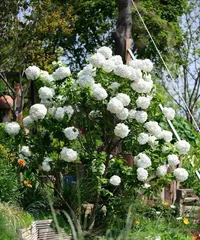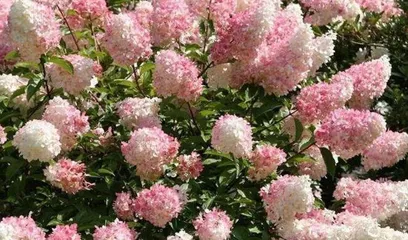European hydrangea is an extremely beautiful flower, and its blooming season can bring people rich visual and spiritual enjoyment. However, to make this flower grow well at home, some care techniques and precautions need to be noted. This article will introduce everyone to the cultivation methods and precautions of European hydrangeas, hoping to help everyone better care for this beautiful flower.

Selecting High-Quality European Hydrangea Seedlings
Before cultivating European hydrangeas, you first need to select high-quality seedlings. Generally, you should choose seedlings with strong stems, full leaves, greenish color, and well-developed root systems.
Choosing a Suitable Growing Environment
European hydrangeas need to grow in an environment with plenty of sunlight, good ventilation, and suitable humidity. When choosing a growing environment, these factors should be considered to select a place suitable for the growth of European hydrangeas.

Watering Appropriately
European hydrangeas need sufficient water, but overwatering can lead to root rot and affect the growth of the flower. Water should be applied in moderation in the morning or evening, and ensure the flower pot has a good drainage system to allow excess water to drain out in a timely manner.
Fertilizing
European hydrangeas need appropriate nutrient supplements during their growth period. Fertilization can be done once in the early, middle, and late stages of each month. Fertilizers with a balanced ratio of elements such as phosphorus, potassium, and nitrogen can be used.
Pruning Timely
European hydrangeas need timely pruning of withered leaves and unhealthy branches to maintain a healthy growth state. When pruning, care should be taken not to cut healthy branches and flower buds.

Pest and Disease Prevention
European hydrangeas are susceptible to pests and diseases, so regular inspection and prevention and treatment are necessary. Insecticides and fungicides can be used for prevention and control.
Repotting in a Timely Manner
When the roots of the European hydrangea start to grow too fast and exceed the capacity of the flower pot, it should be repotted in a timely manner to ensure the growth and development of the flower.
Paying Attention to Temperature Changes
European hydrangeas are relatively sensitive to temperature changes. Corresponding adjustments and protection are needed in the case of high summer temperatures and cold winters.
Avoiding Excessive Handling
European hydrangeas should be handled as little as possible to avoid causing injury and stress to the flower, which affects its growth and development.
Maintaining Good Indoor Air Circulation
A well-ventilated indoor environment can provide a good growing environment for European hydrangeas, so it is necessary to maintain good indoor air circulation.
Getting Plenty of Sunlight
European hydrangeas need sufficient sunlight exposure. The flower pot can be placed on a balcony or by a window to get more sun.
Not Suitable for Placing in Overly Humid Places
European hydrangeas are sensitive to humid environments, so it is necessary to avoid placing the flower pot in overly humid places.
Cleaning Up Fallen Leaves Promptly
European hydrangeas will shed some leaves during the growth process, which need to be cleaned up in a timely manner to ensure the healthy growth of the flower.
Turning the Pot in a Timely Manner
When the flower pot of the European hydrangea becomes too crowded, it should be turned in a timely manner to allow for better development and growth.
In summary, to ensure European hydrangeas grow well at home, it is necessary to consider factors such as the environment, water, light, and temperature, and make appropriate adjustments and protections. At the same time, it is also necessary to pay attention to various common problems and precautions to ensure the healthy and robust growth of European hydrangeas.